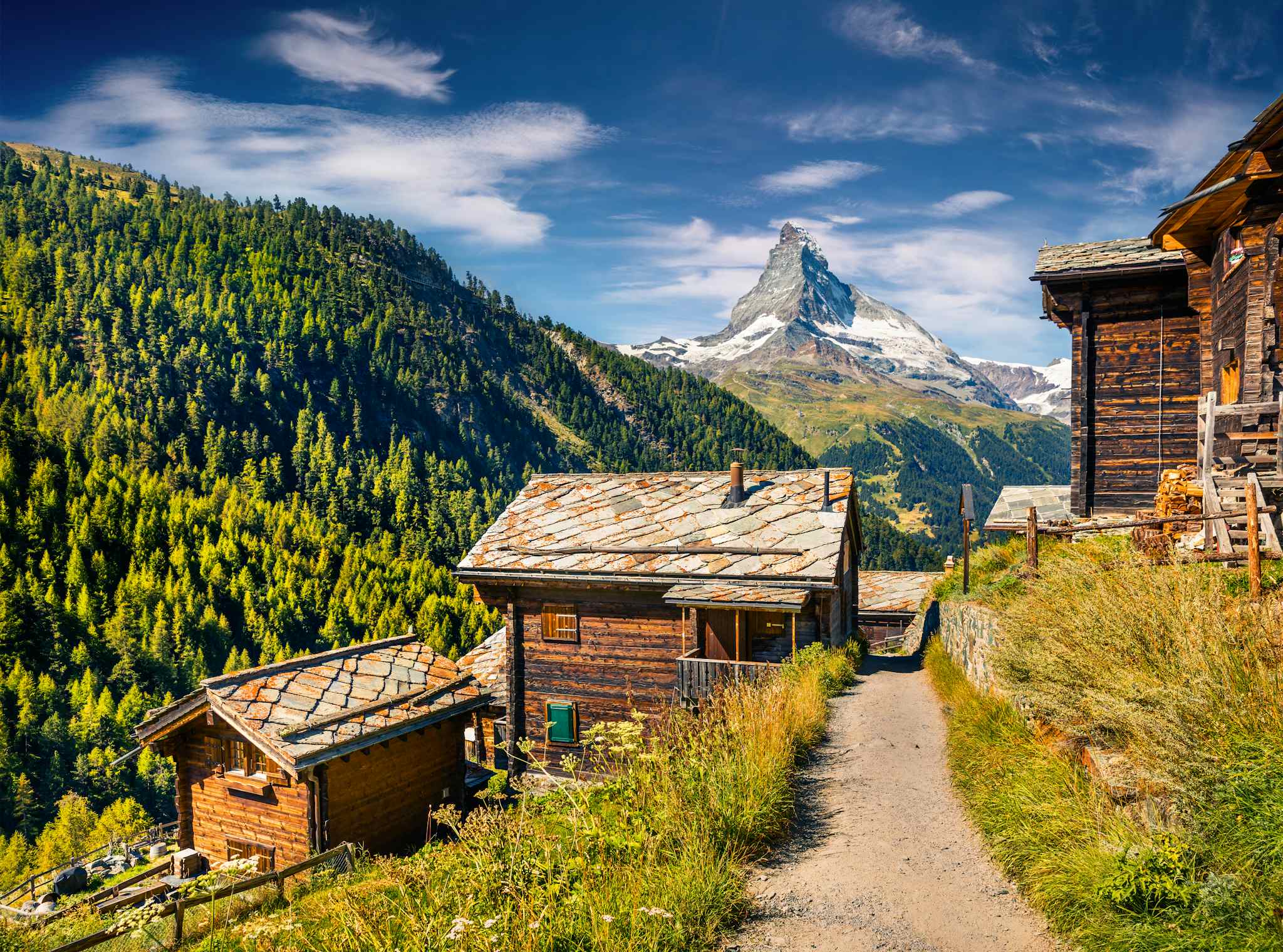Much as we love long hikes, sometimes the best part about them is when you’re done for the day - when you can relax with a beer, refuel with a hearty meal, and enjoy a hot shower. Hut to hut hiking in Europe is popular precisely because it allows you that cosy welcome after a day in the mountains, and allows you to unwind while still immersed in nature.
There are several benefits to hut to hut hiking, when compared to camping. For a start, you don’t have to carry heavy gear with you. Many mountain huts offer half board, with breakfast and dinner included, so you don’t have to worry about packing meals, either. You’ll also have a chance to meet other hikers, which provides you with a ready-made trail community.
Below, we’ve selected 10 of our favourite hut to hut walks in Europe, from the iconic Tour de Mont Blanc to the lesser known Slovene Mountain Trail, in Slovenia’s Julian Alps. We’ve mentioned specific trails, but in many of the areas discussed, such as the Pyrenees or the Alps, it's possible to plan a ‘pick your own’ adventure from hut to hut.
It’s important to note that these route descriptions are only short summaries, designed to inspire but not as a substitute for a decent map or detailed guide. Further planning (or a local guide) is necessary to walk any of these trails.
1. Alta Ruta de Los Perdidos, Spain
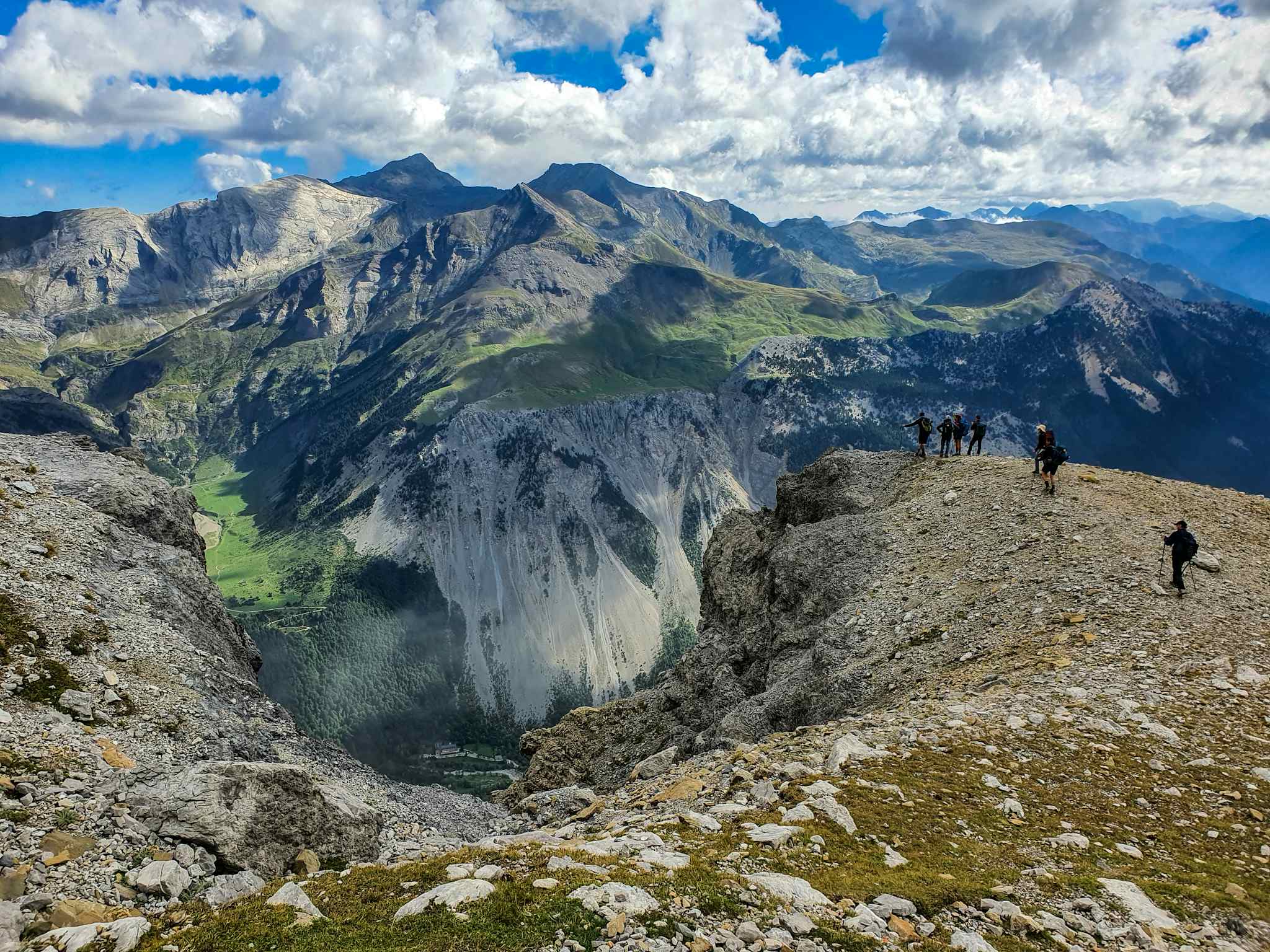
- Best for: Immersion in the landscape of the Pyrenees
- Distance: 58.2 miles (93.7km)
- Duration: 3-4 days
The Alta Ruta de Los Perdidos - translated as ‘the High Route of the Lost’ - is an epic circular hike through two of the great massifs of the Pyrenees: Monte Perdido and Vignemale. You’ll border hop from France to Spain and back as you follow some of the remotest trails in the Pyrenees.
Starting from the Bujaruelo refuge, you’ll ascend to the Puerto de Bujaruelo pass via the GR11 trail. The next day, follow the GR11 to Collado Superior de Góriz, then head northeast to Collado de Añisclo before descending to Pineta Valley, admiring its jagged limestone cliffs before reaching Marboré Lake and crossing into France. Ascend to the Espuguettes Refuge with spectacular views of Cirque de Gavarnie, a natural limestone ampitheatre. The path continues in the shadow of the mighty Vignemale (3,298m) through the Ossoue Valley, and concludes with a descent to Bujaruelo.

What are the huts like? You’ll stay on both sides of the border, in huts in Spain and France. On the French side are classic alpine huts, serving soup and tartiflette - the vast majority of them have hot showers. On the Spanish side, the modern, well-equipped refuges of Pineta and Bujaruelo come highly recommended - the latter has an excellent traditional Spanish restaurant.
Read more: 5 of the Best Hikes in the Pyrenees
2. The Tour del Monte Rosa, Switzerland
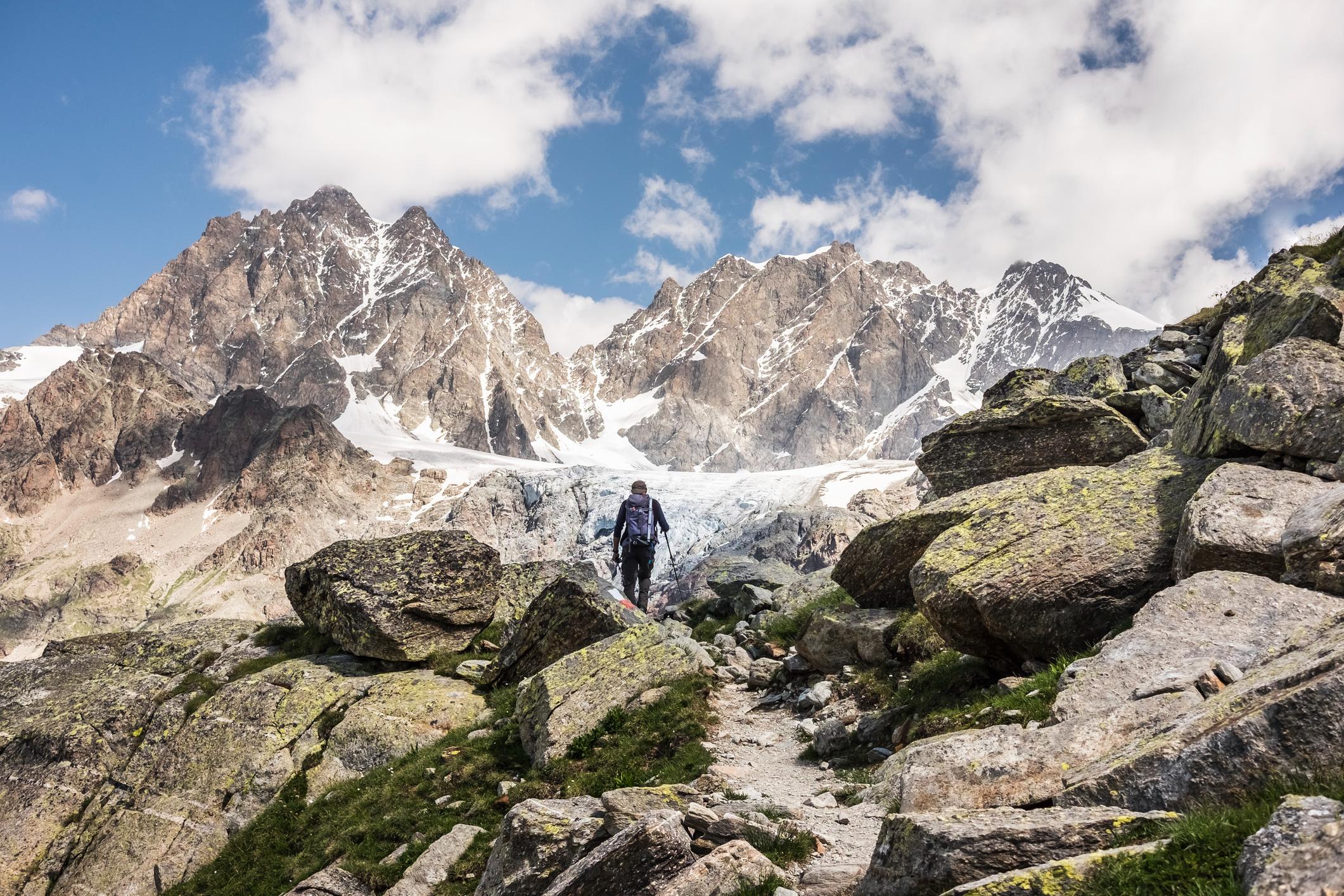
- Best for: A less crowded alternative to Mont Blanc
- Distance: 104 miles (167.3km)
- Duration: 6-14 days
The Tour of Monte Rosa circles the huge mountain plateau of Monte Rosa, passing through pastoral meadows, steep forested valleys and glacial moraine while offering up breathtaking views of some of the 4,000m mountains in the Alps: 4,491m Täschhorn and Dufourspitze (4,634m) amongst others.
Beginning in Zermatt, you’ll ascend into the mountains and cross Theodul Glacier (the only glaciated section of the trail), the highest point of the route at 3,316m. Eventually you’ll descend into the Ventina - a lake-studded valley carpeted with wildflowers - and continue through larch forest, before heading back up into the mountains. The penultimate stage of the route takes you along the high Höhenweg Balcony trail, which is carved into the mountainside and surrounded by stony peaks on either side.

What are the huts like? Huts on the Tour del Monte Rosa tend to be of the traditional alpine variety, with communal dorms and serving rustic but generous helpings of raclette, tartiflette, pasta and more. Facilities might be basic but you’ll be warm and comfortable sitting by the communal fire. We particularly recommend Rifugio Teodulo, for its panoramic views of Theodul Glacier and surrounding mountains.
Read more: A Guide to the Tour of Monte Rosa
3. The Slovene Mountain Trail, Slovenia
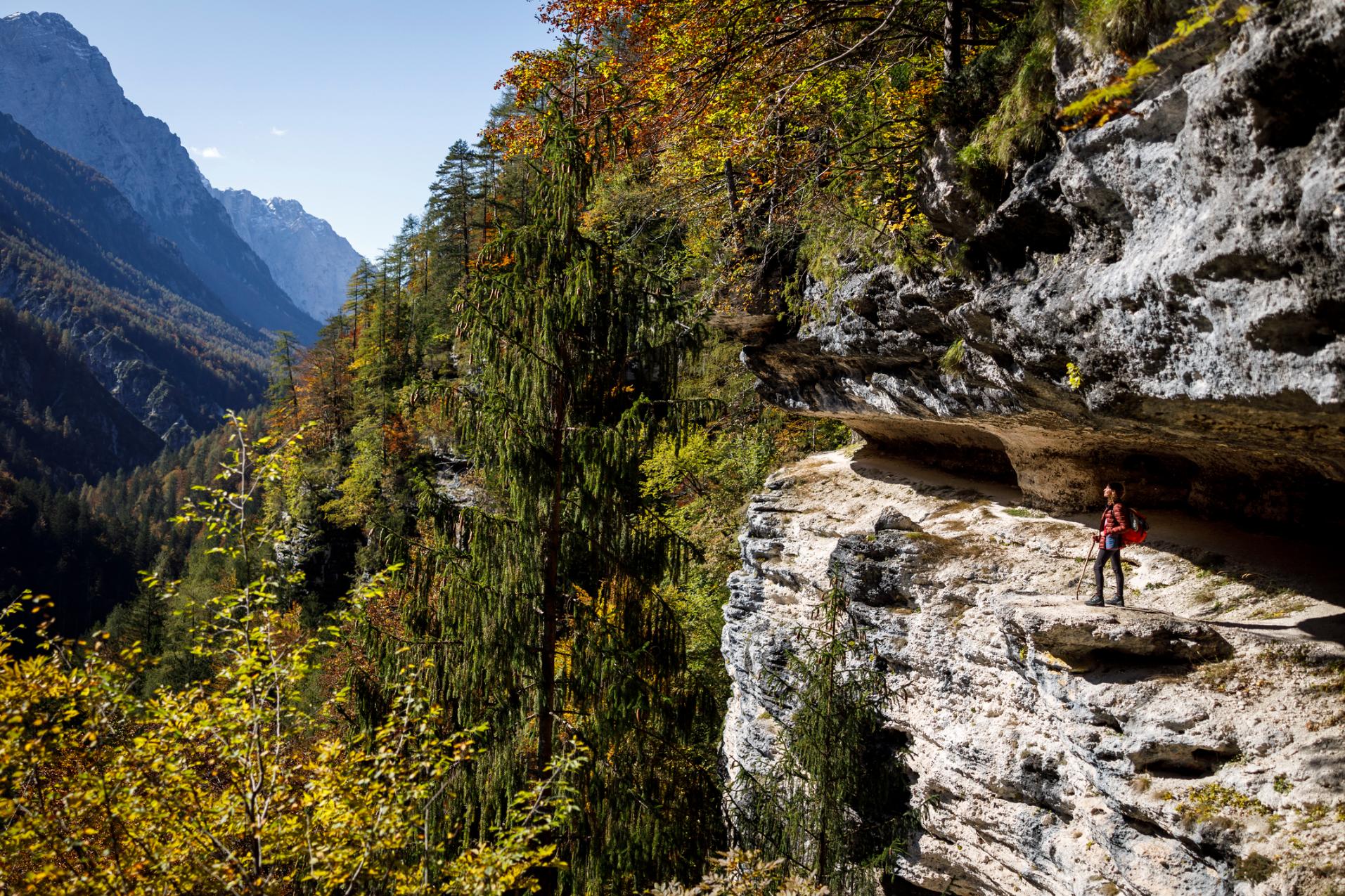
- Best for: immersion in Slovenia’s mountains
- Distance: 383.6 miles (617.4km)
- Duration: 28-40 days
A stunning long-distance trail running from Maribor near the Austrian border to Ankaran on the Adriatic Coast, passing through the Julian Alps and Kamnik-Savinja Alps en route. It’s a huge undertaking to complete the trail in one go - there are 12 stages, each of which can be completed in roughly three to six days.
We’d recommend hiking stages six to eight, through the Julian Alps. You’ll start by hiking through the Vrata Valley and under Triglav’s northeastern face. You’ll climb Mala Mojstravka (2,332m) and Prisojnik (2,547m), before heading to the picturesque Lake Bohinj region. There are several possible route variations, from via ferrata to easier hiking paths.
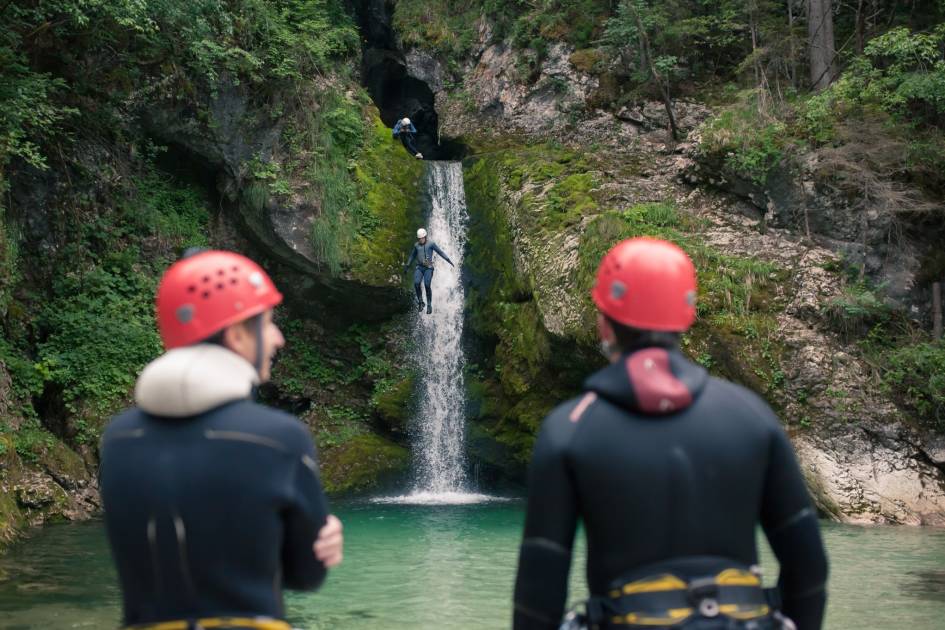
What are the huts like? Huts in the Julian Alps are more expensive than elsewhere in Slovenia, but cheaper than places like the Swiss Alps and Mont Blanc. You’ll enjoy rustic Slovenian cuisine - goulash and bean and sauerkraut soup - and sleep in dormitories.
4. The Tour de Mont Blanc, France, Italy, Switzerland
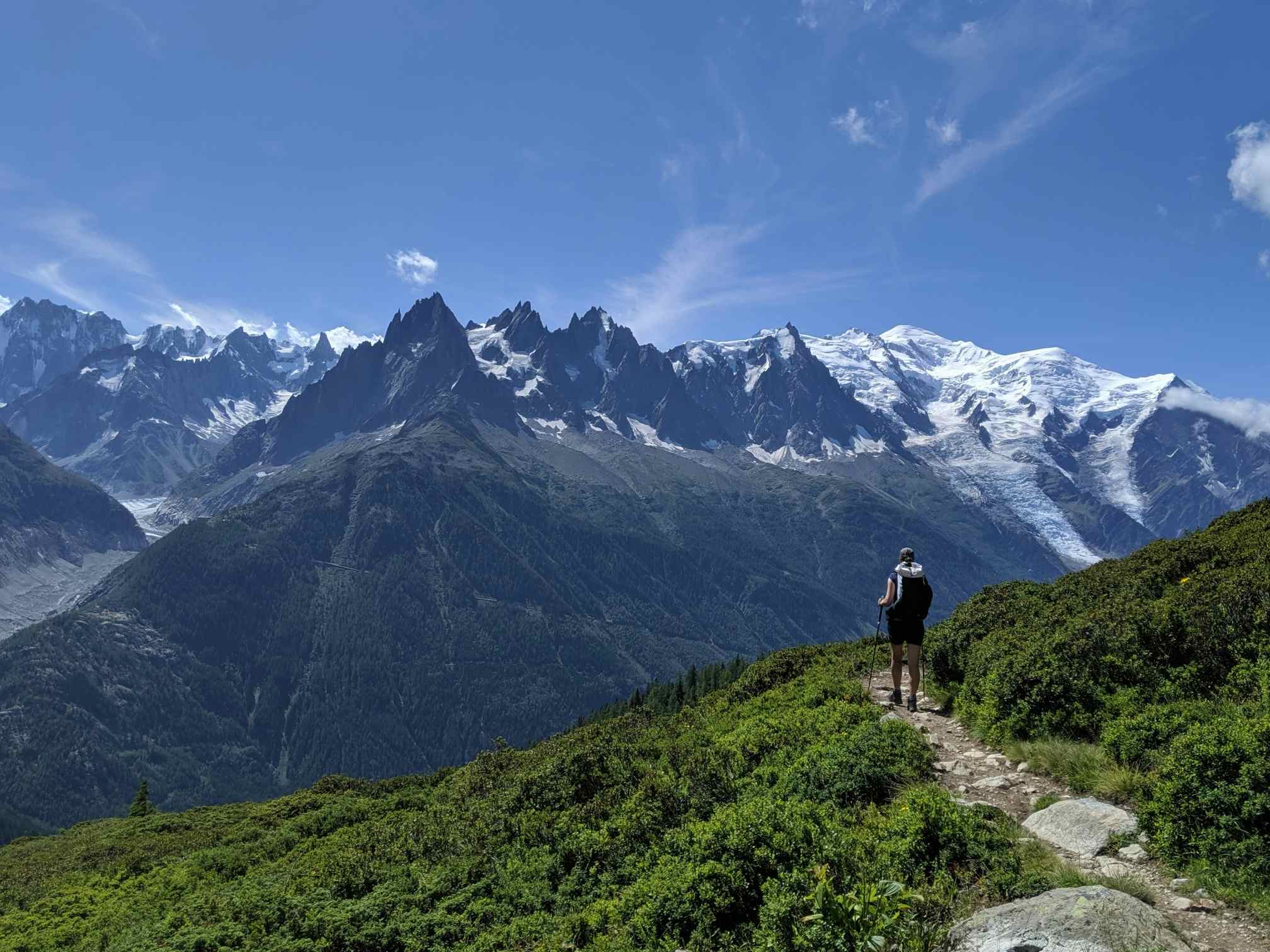
- Best for: Classically beautiful Alpine scenery
- Length: 105.6 miles (170km)
- Duration: 9-11 days
The Tour de Mont Blanc (TMB) is one of the most famous hut to hut hikes in Europe, and for good reason. You’ll circumnavigate the mighty Mont Blanc massif, being treated to views of its glaciated peaks as you traverse suspension bridges, cross idyllic meadows and pass through unspoilt mountain villages.
The TMB begins and ends in Les Houches, near Chamonix. You’ll hike towards the hamlet of Les Chapieux, before crossing the Col de Seigne into Italy. Trekking towards Courmayeur gives you views of some of the most spectacular 4,000m-high peaks on the Mont Blanc massif, including the Grand Combin. Climbing over the Gran Col Ferret (2,537m) will take you into Switzerland. After a couple of days hiking through Switzerland you’ll cross back into France for the final push - where you’ll be treated to views of glacial Lac Blanc, with Mont Blanc rising sharply behind it.
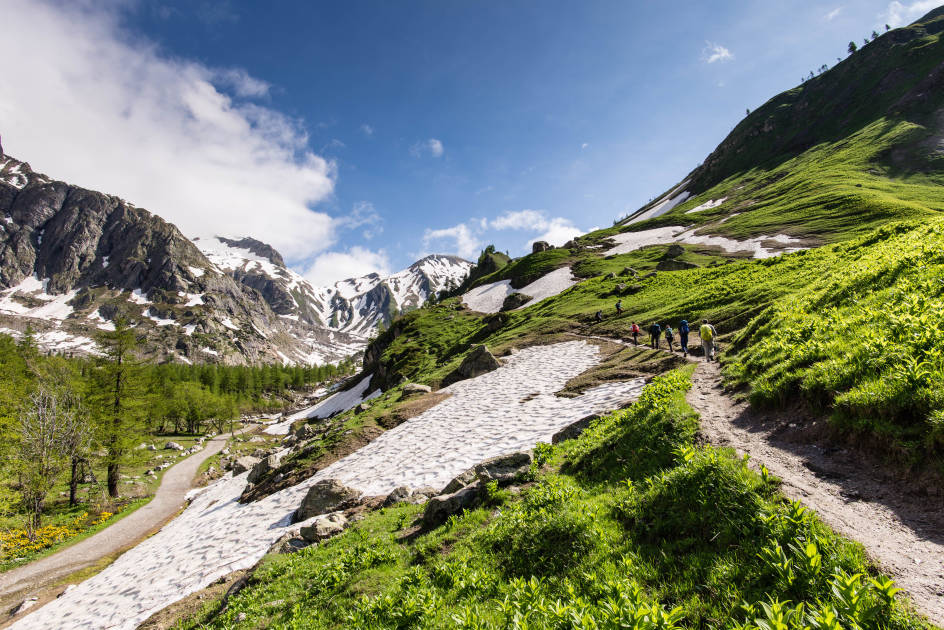
What are the huts like?: There are a wide variety of huts and auberges (hostels) along the TMB, offering everything from large dorms to ensuite private rooms. Many offer half-board, with dinner and breakfast included - expect pasta, soup and pizza - and picnic lunches. A favourite is Rifugio Bonatti, at the foot of the Grandes Jorasses, renowned for its warm hospitality, four course dinners and affordable wine menu. Make reservations early - the best refuges are booked up far in advance.
Read more: The Beginner's Guide to Trekking the Tour du Mont Blanc
5. The Anillo de Picos, Spain
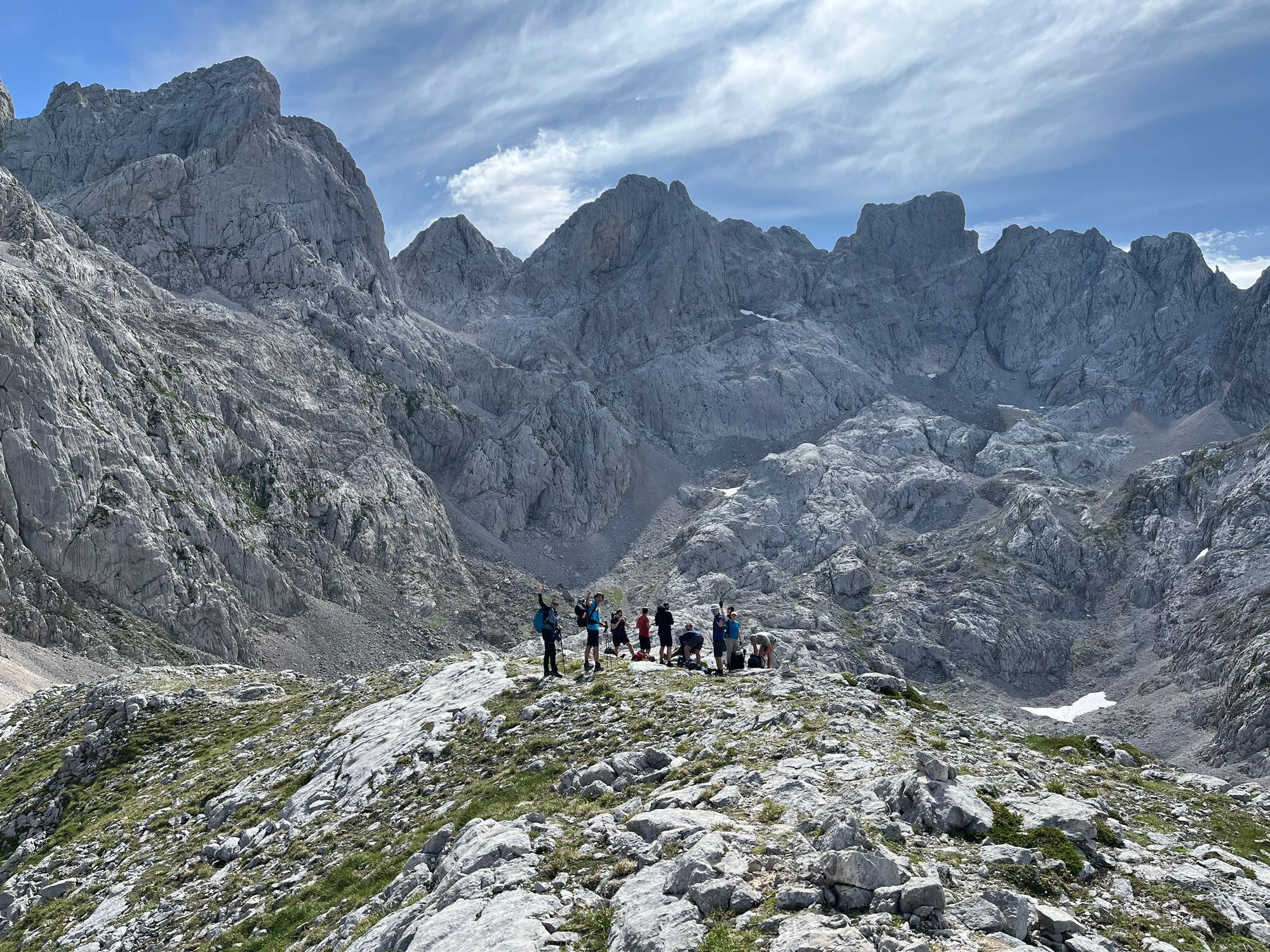
- Best for: Off-the-beaten track trekking in Spain
- Distance: 35.6 miles (57.2km) - 71.4 miles (115km)
- Duration: 4-9 days
The Picos de Europa are jagged limestone peaks in northern Spain, their foothills carpeted in forests that are home to the brown bear and the Iberian wolf. The Anillo de Picos (Ring of Picos) consists of a network of trails which connect its mountain huts together, creating a ‘pick your own’ trekking route.
The easiest option is the Vindios Loop, a circular hike which begins from the picturesque village of Posada de Valdeón, taking you along the Chemin du Cares and up onto the Pico de Europa massif. However, we’d recommend deviating from the loop to head towards Collado Jermoso, for panoramic views of the western massif. Summit La Padiorna (2,319m) the next day, before heading downhill through the lunar-like landscape of the Canal de San Luis, and catching the cable car to Fuente Dé.
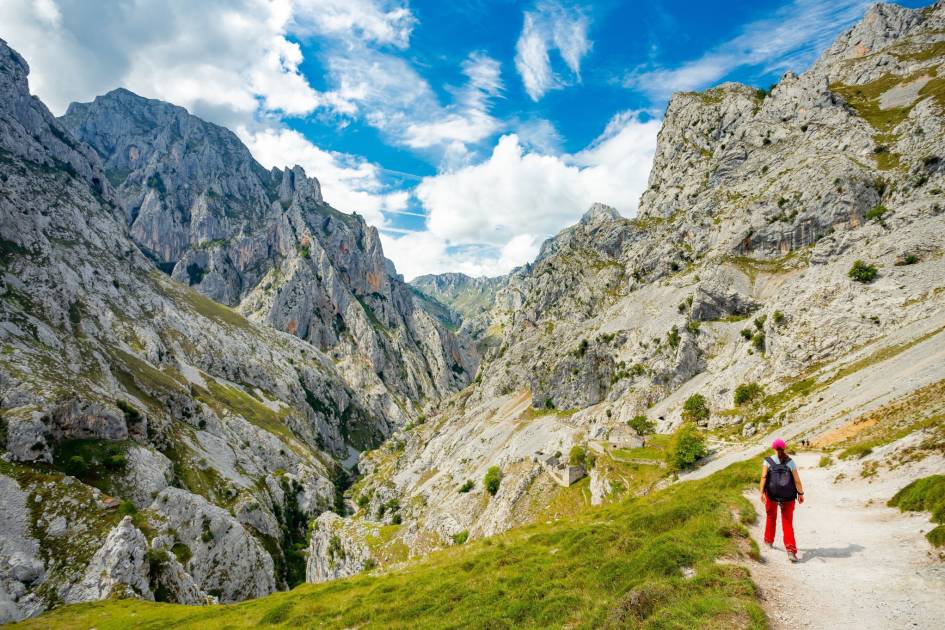
What are the huts like? They tend to be rustic, with dorm-style accommodation and shared bathroom facilities. You’ll pay separately for a bed, breakfast and dinner - a selection of tapas, rustic stews and local cheeses - but prices are very reasonable. Collado Jermoso Refuge has some of the best food, facilities - and a great view.
Read more: Spain's Best Kept Secret: Hiking in the Picos de Europa
6. The Laugavegur Trail, Iceland
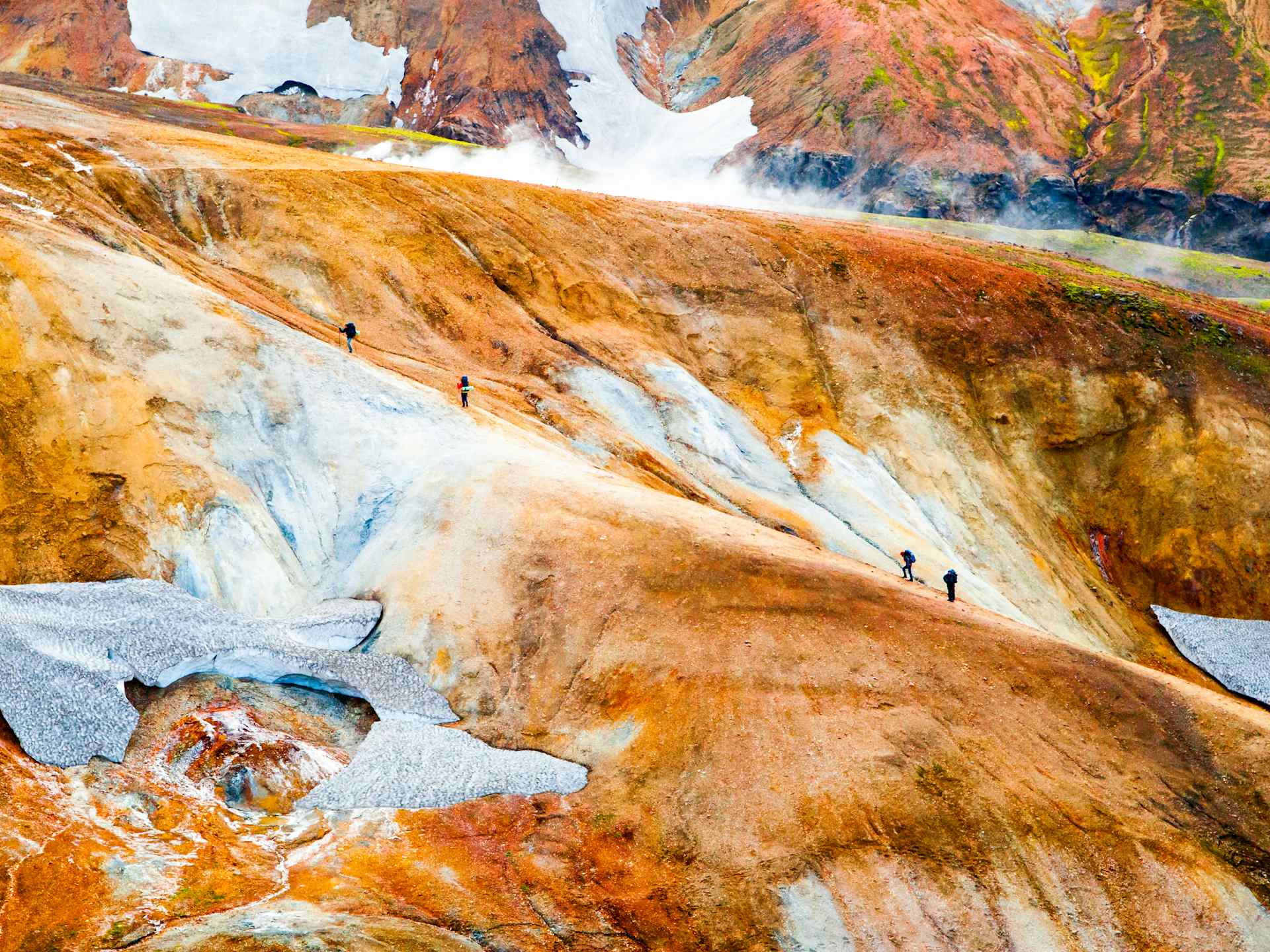
- Best for: Hut to hut hiking in the Icelandic wilderness
- Distance: 34 miles (55km)
- Duration: 4-5 days
The Laugavegur Trail takes you through multi-coloured mountains, past hot springs, over glaciers and volcanic slopes - it’s been rated one of the best hikes in the world by National Geographic.
The trail takes you through an astonishing diversity of scenery in just four days. It begins in the geothermally active Landmannalaugar Nature Reserve, in the Icelandic highlands. You’ll ascend the stark black slopes of Hrafntinnusker and cross the ash field of Mælifellssandur. From there you’ll pass into Þórsmörk, ‘The Valley of Thor’, a surprisingly green area nestled between three glaciers.

What are the huts like? You can expect dormitory style accommodation, a bathroom block and communal kitchens with gas stoves. Meals aren’t provided by the huts - many tour operators will include them. The huts are always warm, thanks to Iceland’s geothermal activity, and very clean. Hikers are encouraged to carry rubbish with them when they leave.
Read more: A Guide to Hiking the Laugavegur Trail
7. The Dolomites’ Alta Via 1, Italy
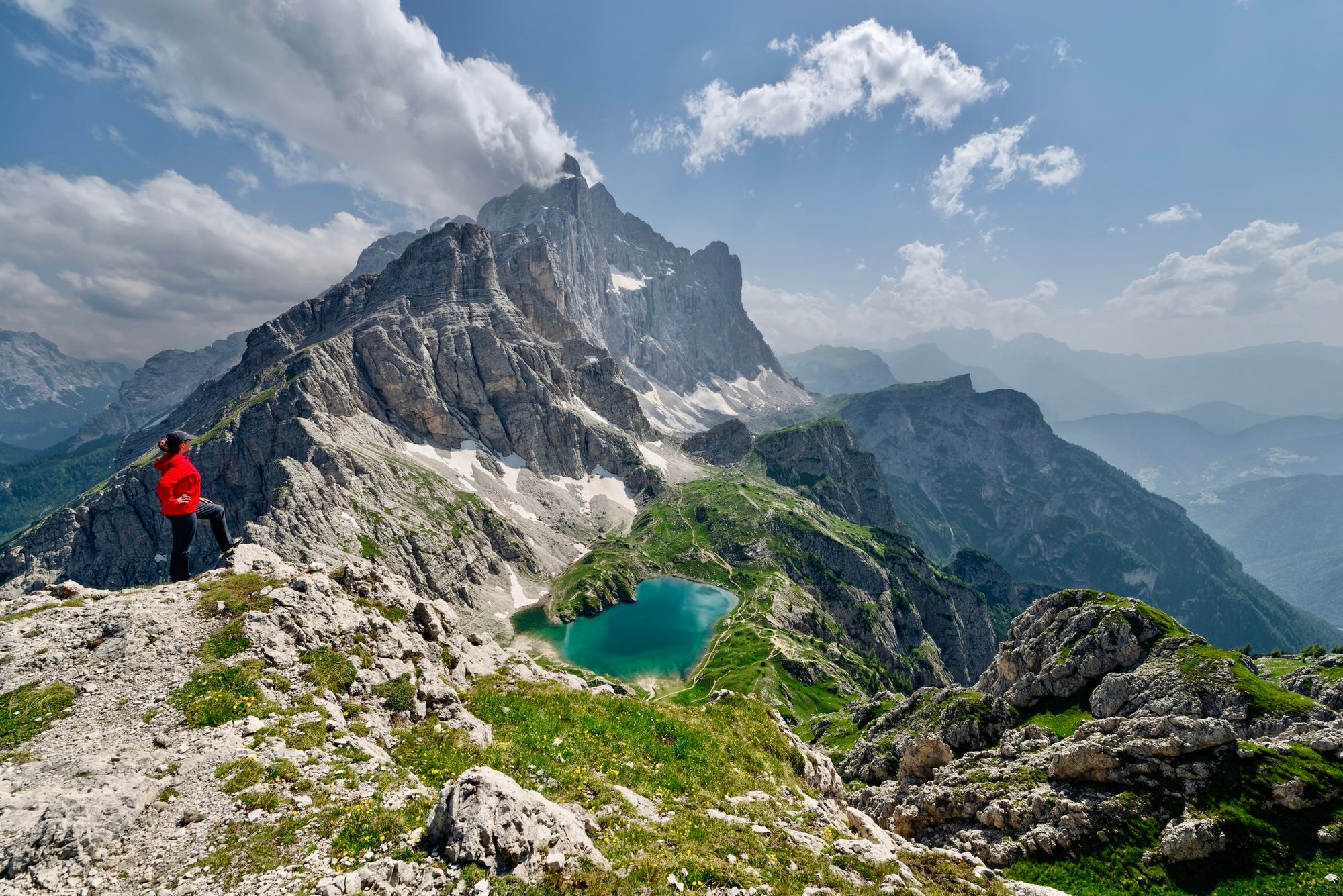
- Best for: Pasta and peaks
- Distance: 120km (75 miles)
- Duration: 9-10 days
The Alta Via 1 is considered one of the best hut to hut treks in the Dolomites, with craggy limestone peaks surrounded by alpine meadows. It goes from Dobbiaco in the north to Belluno in the south, passing the turquoise Coldai Lake and the stony pinnacles of Civetta, and traversing the wild landscapes of the Moiazza Range.
Another option is to hike sections of the Alta Via 1 and Alta Via 2 - a more challenging haute route up steep gullies and along via ferratas. And then there’s also the Alta Via dei Pastori (High Shepherd's Way), an ancient shepherds' path linking the pastures and mountain huts of the Val del Bois, via ancient woodland inhabited by marmots and ibex.
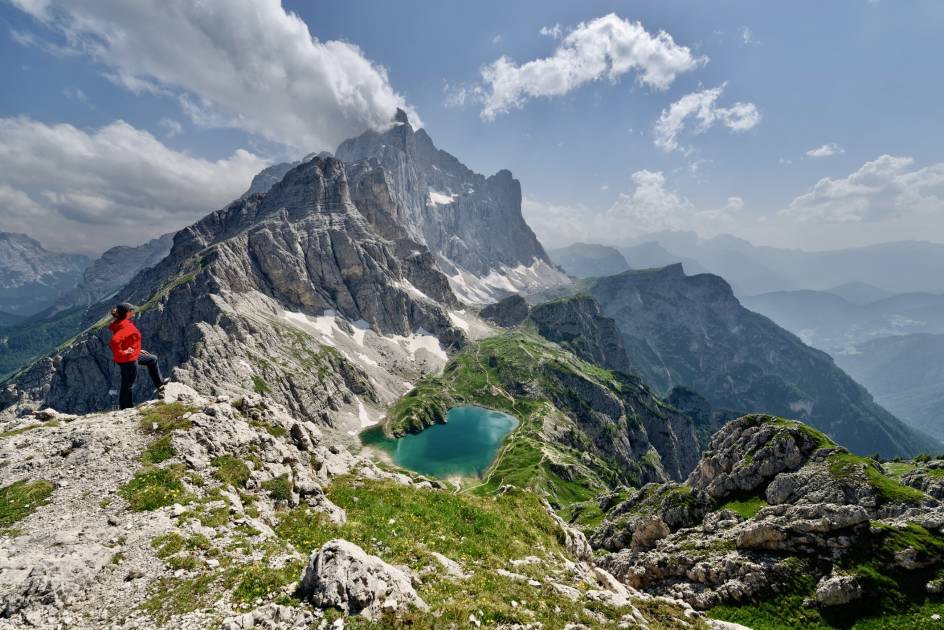
What are the huts like? The huts in the Dolomites are often intimate and family-run, catering to a smaller number of trekkers than in other European ranges. They have restaurants where you can fuel up on local dishes like gnocchi with smoked ricotta, meat stew and mushrooms with polenta. Refuge Flora Alpina is a cut above, boasting a spa with a sauna cabin and hot tub.
Read more: 5 of the Best Hikes in the Dolomites
8. The Matterhorn Circuit, Switzerland
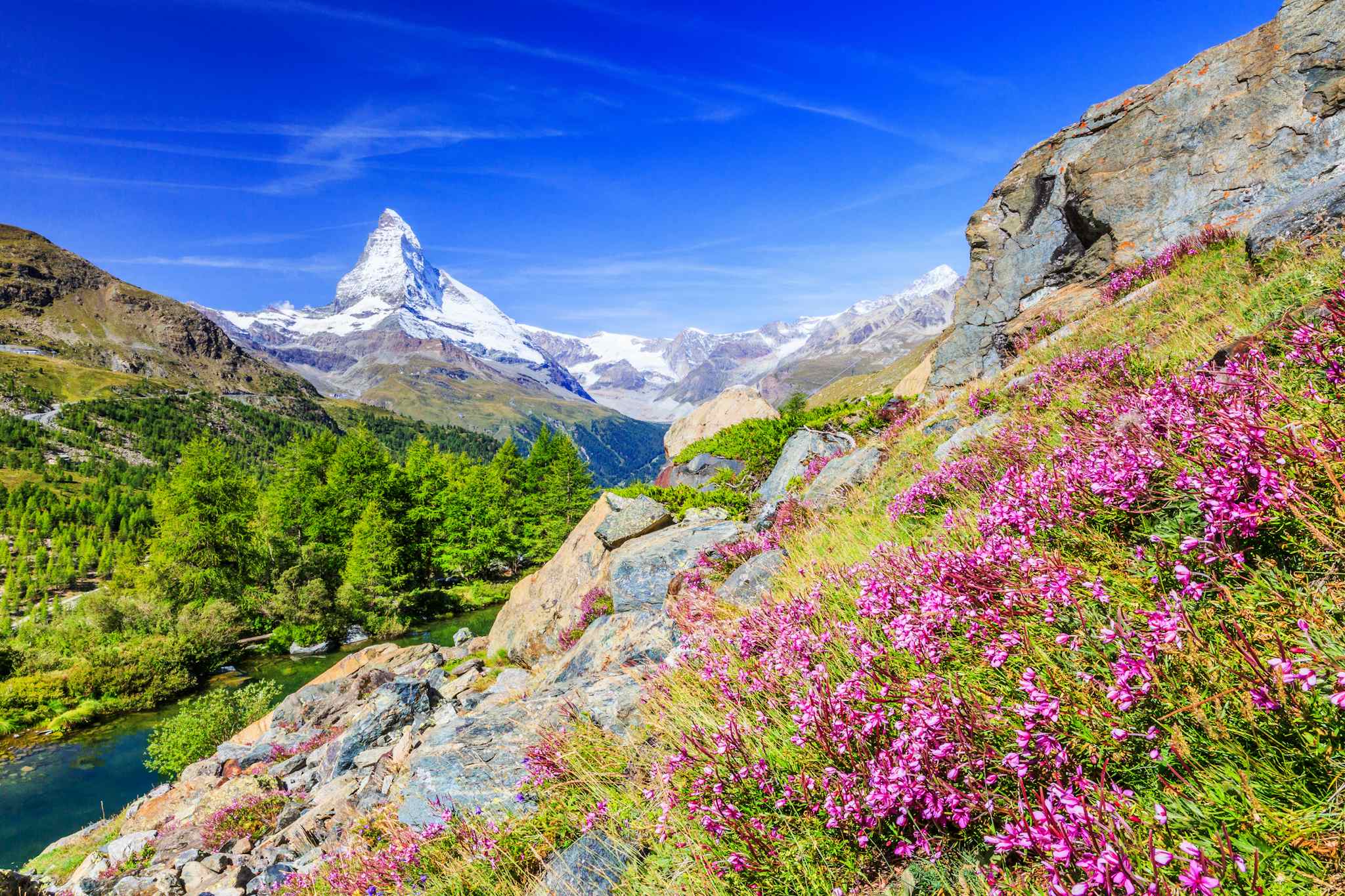
- Best for: Views of the Matterhorn
- Distance: 93 miles (150km)
- Duration: 6-10 days
The Matterhorn Trek has been described as one of the most beautiful treks in the world, incorporating many ancient trails that have linked the Swiss Alps and Italian valleys for centuries. It circles the Matterhorn, one of the world’s most distinctive mountains, with a razor sharp ridgeline leading up to a peak shaped like a witch’s hat.
You’ll begin in Zermatt and hike along The Europa Trail towards Europahütte. From here it’s a gorgeous route through the mountains towards Zinal. You’ll pass glacial Lac Moiry and the mountain-encircled Lac Bleu as you continue. On the final stage of the trek you’ll hike from the mountain town of Breuil-Cervinia over the Theodul Pass (3,295m) towards Zermatt, enjoying amazing views of the Matterhorn.
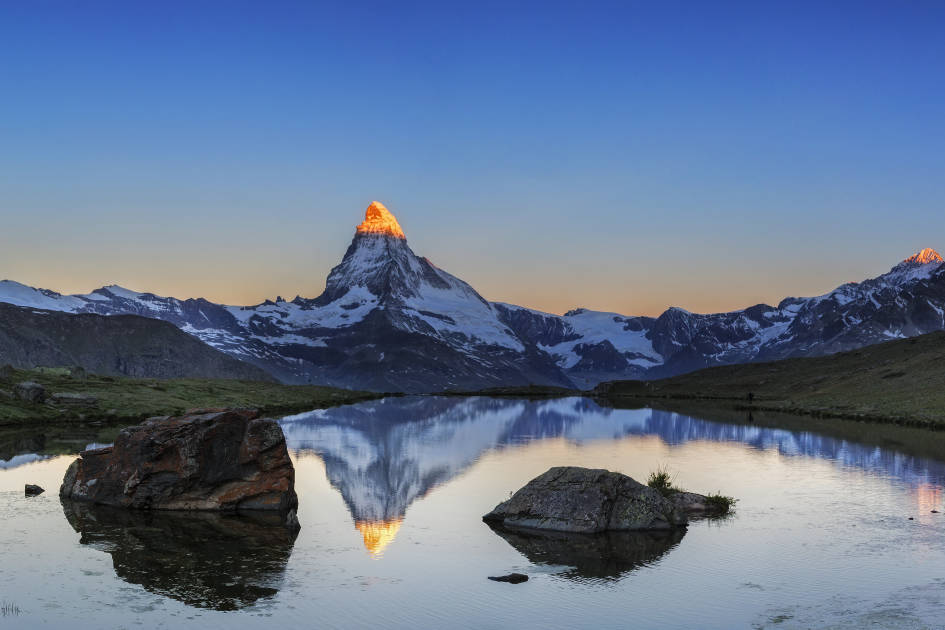
What are the huts like? Refuges along the Tour of the Matterhorn are simple, clean and comfortable, offering dorm-style accommodation, hot showers and outlets for charging your phone. Continental breakfast and hearty, rustic dinners are served - such as rosti, raclette and pasta. The Europahütte is particularly popular - and known for its delicious homemade cakes.
Read more: The Circuit: A Guide to the 150Km Tour of the Matterhorn
9. Gran Paradiso Hut to Hut Trail, Italy
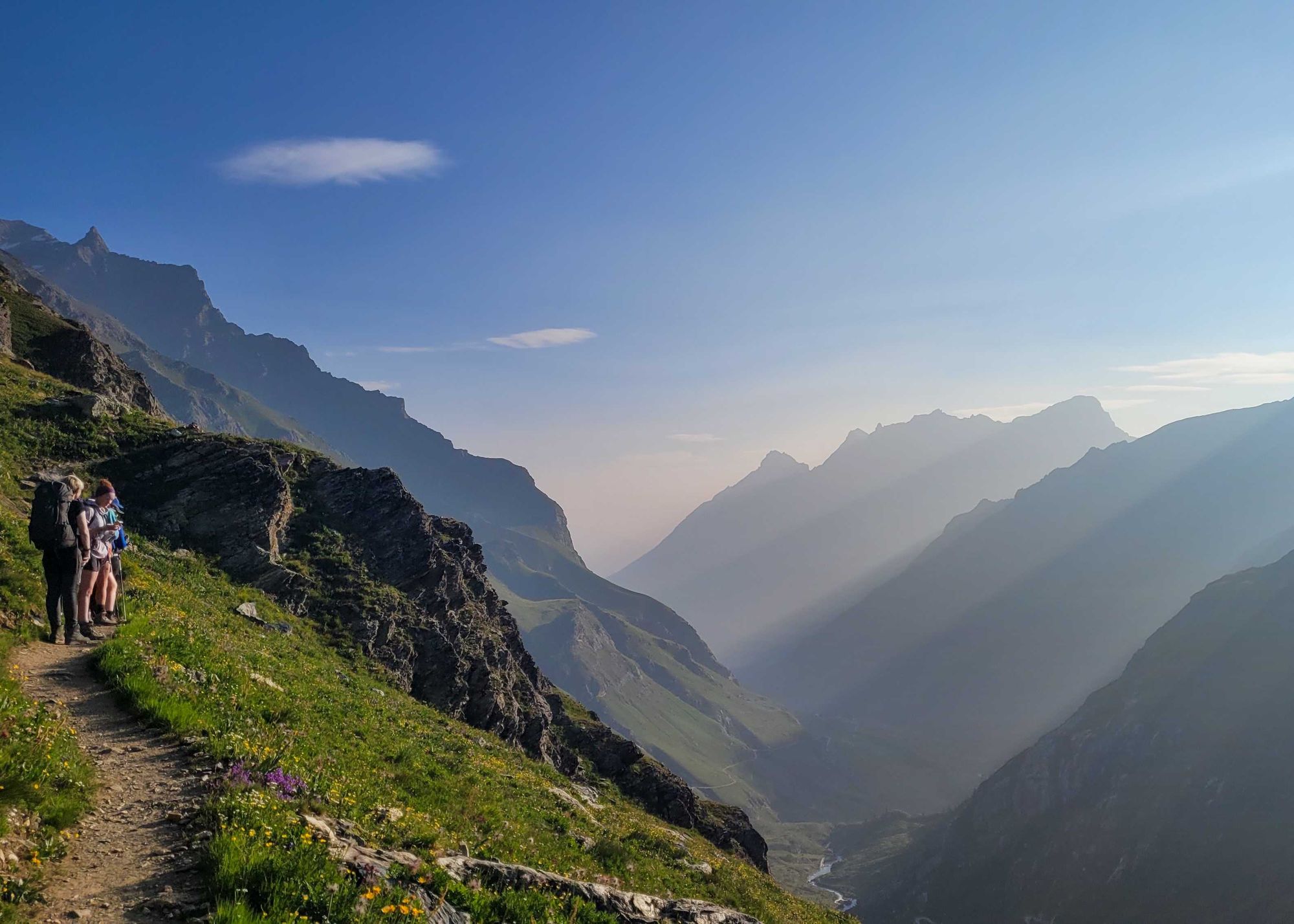
- Best for: Ibex-spotting
- Distance: 34.7 miles (56km)
- Duration: 3-4 days
The Gran Paradiso National Park is located in the Valle d’Aosta, in northwestern Italy’s Alps - it includes the towering Gran Paradiso, a 4,061m-high mountain. Originally this park was established to preserve the ibex, and is renowned for its flora and fauna - it’s also home to marmots, golden eagles and bearded vultures. Its superb hiking is another - there are over 310 miles (500km) of hiking trails through the park, linking various mountain huts together.
Our recommendation for a pick-your-own hut to hut adventure in the Gran Paradiso is a three day epic beginning at the mountain village of Pravieux. You’ll hike up the eastern side of the valley to Rifugio Tetras Lyre (1,996m). As you climb, you'll have views of glaciers and mountains, including the north face of Gran Paradiso peak (4,061m). You'll pass the glacial lakes of Col Nivolet Plateau and ascend Col Rosset (3,024m), one of the highest walkable passes in the Alps. The final day's walk passes Goletta Lake and ascends to Col Bassac Derè – the highest point of the trek at 3082m – before descending to the hamlet of Surrier.

What are the huts like? Mountain huts are small, basic and very friendly - you’ll stay in small dorms with shared bathrooms. Food is rustic but plentiful; think pastas, meat and polenta. The Vittorio Emanuele II refuge, one of the oldest and largest huts in the region, is renowned for its friendly atmosphere and excellent views of Gran Paradiso.
10. The Walkers’ Haute Route, France, Switzerland
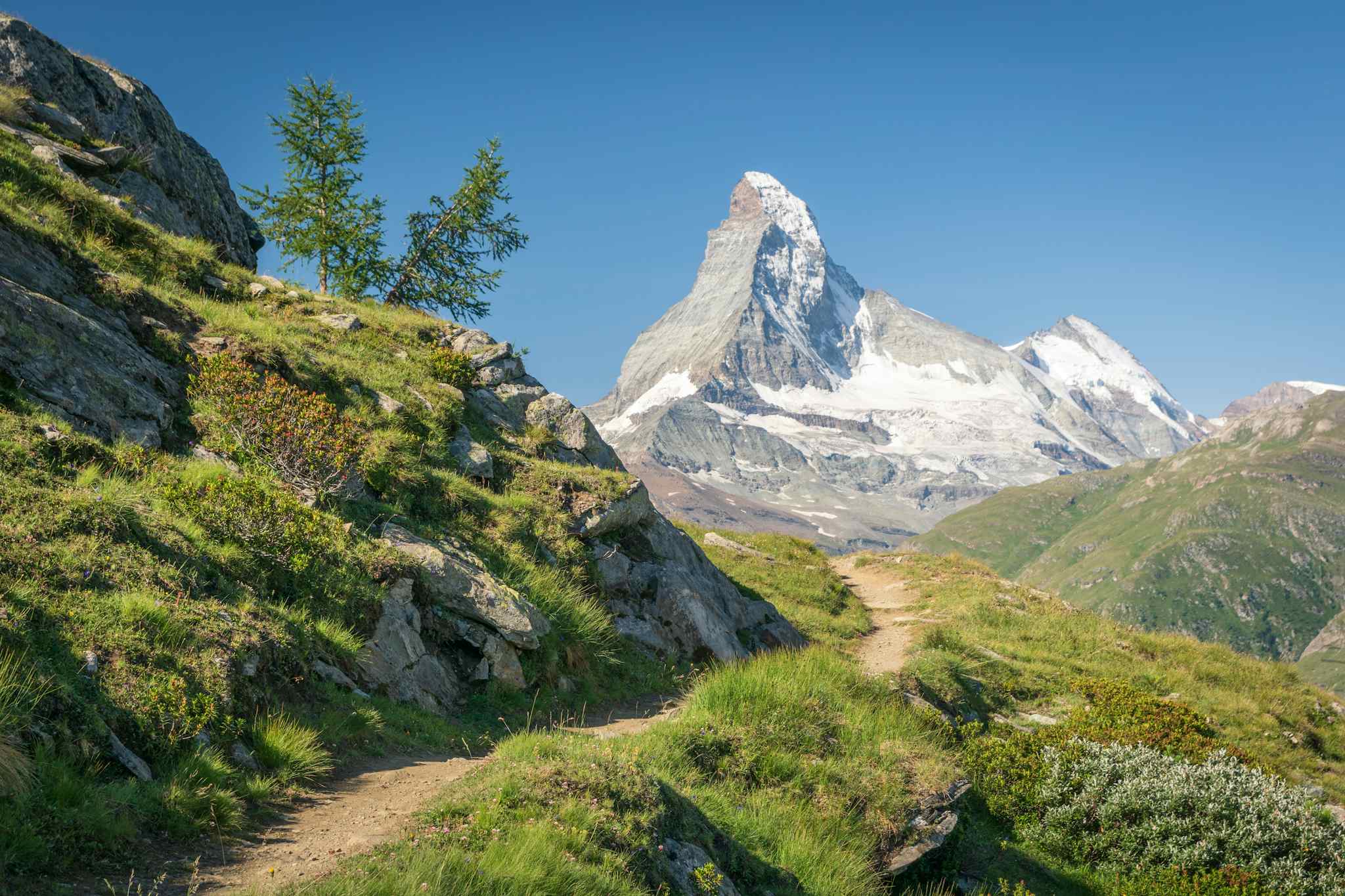
- Best for: Views of Mont Blanc and the Matterhorn
- Distance: 140 miles (215km)
- Duration: 10-14 days
Not to be confused with the Haute Route in the Pyrenees, the Walkers’ Haute Route takes you from Chamonix to Zermatt across the Alps - so you’ll have excellent views of the Mont Blanc massif and the distinctive Matterhorn.
Begin by ascending the summit of L'Aiguillette des Possettes above the Chamonix valley and heading towards Col de Balme, on the Swiss border. You’ll scramble up boulder-strewn terrain to reach the Fenêtre d'Arpette, a wild mountain pass known for its untouched beauty, before descending to Switzerland. You’ll continue over alpine passes - the highest of which is the Col de Torrent, at 2,894m, before hiking high above the Matterhorn Valley on the Europaweg trail, and finishing in Zermatt.

What are the huts like? There’s a wide variety of accommodation along the Haute Route. In some towns - like Arolla and Champex-Lac- you’ll be able to pick from B&Bs, guesthouses and hotels. In more remote areas there are mountain huts, such as Prafleuri and Europahütte, both in Switzerland, where you’ll find dormitory accommodation and hearty set meals for dinner.
Read more: Everything You Need to Know About the Haute Route
When is the Best Time to go Hut-to-hut Hiking in Europe?
The best time to go hut to hut hiking in Europe tends to be between June and September, as this is when the majority of the alpine huts are open, with many closing during the winter season. Huts in warmer countries, or at lower altitudes, might be open for longer - Refugio de Bujaruelo (1,338m) in the Pyrenees is open from the beginning of May to the end of October. It’s important to do your research for the individual routes.
July and August are the peak hiking months. This is when the weather is likely to be best, but trails are crowded and huts have less availability. If you’re travelling as a guided tour, this is less of a problem - but if you’re travelling independently make sure you book in advance.
Read More:
- 15 of the Best Day Hikes in Europe
- 20 of the Best Hikes in Europe
- Hikes in the Alps: 10 of the Best Long Distance Trails
Inspired? Check out our Hiking Adventures in Europe.


